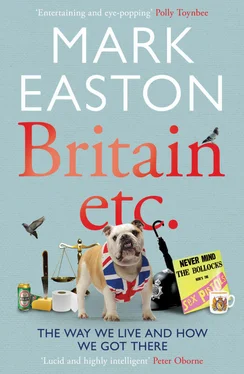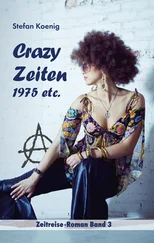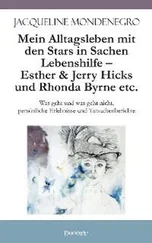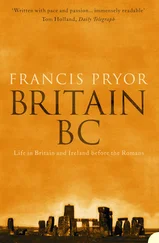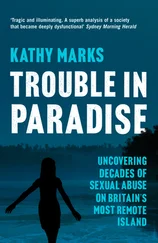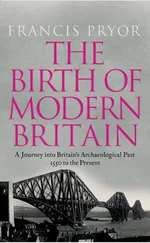At first sight, this doesn’t make sense. Marriage levels in Britain are at an all time low and commitment seems to have become a dirty word. For every two weddings there is one divorce and cohabiting couples are even less likely to stay the course than those who have tied the knot. We have the highest proportion of lone parents in Europe — almost a quarter of UK children live with just Mum or Dad. It is a catalogue of marriage break-up and relationship breakdown that we know is associated with depression, delinquency, unemployment and poverty. Yet when asked in 2010 whether they were happy with their family life, a remarkable 97 per cent replied ‘yes’ — a more positive view than in any similar survey I have seen.
Much of the general anxiety about the British family relates to its changing structure, particularly a concern that we are moving away from the model family, whose uncomplicated life shaped the attitudes of the baby-boomer generation.
‘This is Janet. This is John.’ The Janet and John books were first published in Britain in 1949 and, by the 1960s, 80 per cent of schoolchildren were following their lives as they learned to read. There was Mother in the kitchen, Father in the garden playing with Darky the dog, and the two children, scrubbed and ready for another trip to the shops. In their most formative years, millions of young Britons were encouraged to believe that Janet and John’s ‘nuclear’ family was what normal life looked like. It was a reassuringly straightforward and stable world, in contrast to the social turmoil of post-war Britain.
Hitler’s bombs had not just smashed the country’s buildings and bridges; war had torn families apart and left countless marriages wounded or doomed. There was genuine concern that the fabric of British life might have been damaged beyond repair. Into this anxiety walked John Bowlby, a psychologist whose own experiences of family life had inspired a fascination in child development.
Son of the king’s surgeon, John’s childhood was typical of an upper middle-class British boy at the opening of the twentieth century. In his earliest years, he saw his mother for only one hour a day, after teatime, and was looked after almost exclusively by a nanny. His parents shared a common belief that parental attention and affection would spoil a child. At the age of seven, John was dispatched to boarding school, later reflecting, ‘I wouldn’t send a dog away to boarding school at age seven.’
Driven by his personal traumas, Bowlby developed his ‘attachment theory’, the idea that an infant needs a close relationship with at least one parent or carer in order for social and emotional development to occur normally. It was a hypothesis that gained ground during the Second World War, as welfare officials tried to look after thousands of small children separated from their parents or orphaned.
When peace had been restored, Bowlby published a book that took the theory further and became influential in the development of family policy. Entitled Forty-four Juvenile Thieves , it focused on children with emotional problems. Half the study group of eighty-eight youngsters had been reported for thieving while the remainder had not committed any crime. Having compared the backgrounds of children in the two groups, he concluded that ‘broken homes’ caused delinquency.
Bowlby later clarified his thinking, explaining that he had meant the cause was ‘broken mother-child relationships’, not necessarily broken marriages. Nevertheless, the report was seized upon by those who argued that marriage itself protected against criminality, that the nuclear family structure directly improved social outcomes, and that D.I.V.O.R.C.E spelled disaster.
They are theories that still dominate political debate about the family today. In the Conservative Party’s 2009 policy paper ‘Breakthrough Britain’, former Tory leader Iain Duncan Smith claimed to have evidence justifying government encouragement of marriage in the national interest. ‘You cannot mend Britain’s broken society unless you support and value the institution that is at the heart of a stable society.’
In the post-war years, the British government had also been persuaded that the social dangers associated with marriage breakdown required state intervention. The Archbishop of Canterbury Geoffrey Fisher rose in the House of Lords in March 1947 to say that each single divorce created ‘an area of poison and a centre of infection in the national life’. Government, he argued, should convince the ordinary level-headed citizen that marriage was an obligation and that adultery and fornication were deadly sins. ‘Divorce,’ he said, ‘is always the final record of a human disaster.’
With divorce rates having increased forty-fold in forty years, ministers agreed to set up state-funded Marriage Guidance Centres to try to stop the rot. A founder of the counselling movement, the Reverend David Mace, was invited to deliver a series of lectures on marital life and strife on the BBC’s Home Service. ‘Don’t let things drift on from bad to worse, and then come for help about your marriage after it has crashed in ruins at your feet,’ he told his audience. ‘There isn’t a minute to waste.’
As Britain rebuilt its infrastructure, the model of the ideal nuclear family was also being renovated to take account of the social legacy of war — particularly the changing ambitions of women. The traditional pre-war marriage assumed the man ruled the roost: wives undertook parenting and domestic duties while their husbands were the breadwinners and paternal protectors. But when men went off to fight, women were invited to enter the labour force and proved reluctant to resume their place in the kitchen after the troops returned home.
Prominent social commentators argued it was mothers neglecting their household responsibilities who were to blame for the wave of divorce and delinquency: latch-key children up to mischief while their parents were both at work; the birth-rate tumbling as marriages failed. The question became how to woo women back to the hearth. The answer was to redraft the contract. Men and women should resume their traditional roles, it was decided, but with husband and wife enjoying equal status. Education programmes trained girls for domesticity and motherhood, while promising personal fulfilment in a ‘relationship’ rather than an ‘institution’. This romantic ideal proved popular with women, even if the reality was often very different. Many men struggled to adapt.
The hope had been that the ‘companionate family’ model would sustain the institution of marriage through a tricky patch. The reality was that it often raised unattainable expectations and was later accused of being a major contributor to marital disillusionment and the rise in the divorce rate. By the end of the 1960s it was clear that government would have to think again if the traditional family was to survive the fallout from revolutionary sexual politics.
It was no longer possible to try and shame married couples into staying together. Plan B was to encourage those who did divorce to re-marry. It was an admission that not every couple could or should stay together ‘til death us do part. Instead, the idea was that even when individual marriages failed, the institution would survive.
The Divorce Reform Act of 1969 made it much quicker and easier for couples to split and re-tie the knot, and initially it seemed the tactic might work. In 1972, the year after the law came into force, more veils were lifted, brides kissed and confetti scattered than at any time since the frantic days of 1940 when the troops were leaving. The number of marriages dissolved had jumped 60 per cent to 119,000 but, crucially, the number of divorcees who remarried was 121,000.
Читать дальше
